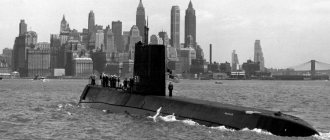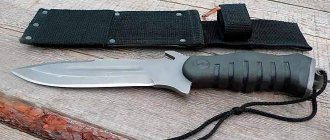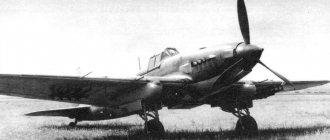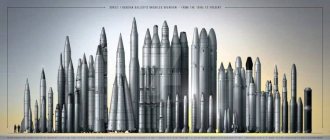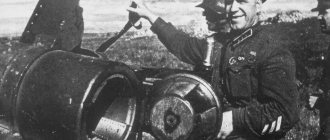On November 27, 1705, by order of Peter I, the first division of marines was created in the Russian fleet - the Marine Regiment
In the broad picture, the Marine Corps has existed in Russia, if not always, then certainly since Peter the Great’s time, and has served to this day. Meanwhile, in the history of this type of coastal troops there were periods when the number of marines amounted to hundreds of thousands (as during the Great Patriotic War), and times when these troops were not in the country at all. Today's Russian marines trace their history back to the Marine Regiment, created by order of Tsar Peter I on November 27 (16, Art. Art.), 1705, but the first steps towards the emergence of the Russian Marine Corps were taken half a century earlier.
"Smooth army" of the Moscow kingdom
In pre-Petrine times, the Russian army often used such a tactical technique as the “smooth army”. This term meant troops moving along inland waterways on river boats. Inherited from the knights of the times of Kievan Rus, this method of transporting troops began to be most actively used in the 15th century, and by the 17th century, when the Muscovite kingdom waged wars for access to the Azov and Baltic seas, it became more than widespread. The most famous case of using the “smooth army” was the Riga sovereign campaign of 1656. In order to transfer troops to Riga for the siege along with siege artillery, the construction of a river fleet began on Lake Kasplya near Smolensk under the leadership of governor Semyon Zmeev: in July, 15,000 foot warriors were delivered on 300 plows to the Riga walls along the Western Dvina. With some stretch, they can perhaps be considered the progenitors of the Russian Marine Corps.
The siege of Riga in 1656, in which the “smooth army” of Tsar Alexei Mikhailovich and the artillery delivered with him played an important role. Engraving "Siege of Riga" from the end of the 17th century
Source: history-maps.ru
From the Romans to the Venetians
Sea battles appeared as soon as people learned to build ships. Already in antiquity, Persians and Greeks, Romans and Carthaginians fought. The tactics of the then naval battle were simple: fire at the enemy ship with bows, get close to it, ram the hull, or board the ship. As navies developed, it became clear that professional warriors were better fighters than sailors. The Romans, who relied much more on the training of infantry than on the skill of sailors, quickly came up with the idea of sending legionnaires to fight on the decks of ships.
But the real marines, that is, soldiers specially trained in combat on ships and landing from sea to land, are the merit of the Venetians. Shortly before the IV Crusade, Doge Enrique Dandolo ordered the creation of a special regiment consisting of ten companies stationed on Venetian ships. In 1550, the ship's soldiers received the general name Fanti da mar. They distinguished themselves in all the Venetian wars, ensuring victories for the fleet of the Most Serene Republic and capturing the islands to which the galleys sailed under the flag of St. Mark.
Marine Corps of Peter I
The classic definition of the Marine Corps implies that it is a branch of coastal troops operating in the interests of fleets and coastal groups. And from this point of view, the first real marine corps in Russia, of course, was only the Marine Regiment of Peter I. It was created taking into account the experience of the crowned father of the reformer Tsar - Tsar Alexei Mikhailovich, who introduced the practice of forming ship teams of archers to protect rowing ships plying the Volga to the Caspian Sea. There is no doubt that Pyotr Alekseevich also took into account his personal experience in capturing the Swedish ships Gedan and Astrild on May 7, 1703. Then, to attack these ships, the tsar had to assemble a detachment of infantrymen who had little understanding of boarding, and only the courage of the Preobrazhentsy and Semyonovtsy ensured the success of the adventure. Apparently, this is why the first Marine Regiment, created by order of November 27, 1705, was formed from officers and soldiers of the Semenovsky and Preobrazhensky regiments. Their main tasks were to participate in naval boardings and landings in the Baltic, and the first Russian marines were supposed to serve only on sailing ships: if necessary, ordinary infantry were still put on rowing ships.
The Battle of Gangut on July 27, 1714 was the first serious test for the Russian marines, and it passed it with honor. Engraving “Battle of Gangut” by artist Alexei Zubov, 1717, central fragment
Source: renesans.ru
Sea grenadiers in battle
During the Russian-Turkish War of 1787–1791, by order of His Serene Highness Prince Grigory Potemkin, the formation of two Primorsky Grenadier Regiments began: the Dnieper and Nikolaevsky. The commander-in-chief of the Russian army wrote about their tasks as follows: “The benefit of these regiments will be that they will form a guard (in the Crimean ports) and everyone in addition to infantry service will be trained as sailors.”
The famous battle of the Dnieper marines took place on October 20–21, 1790, when the ships of the Liman flotilla approached the Sulina branch of the Danube, which was defended by two Turkish batteries and ships. Such forces allowed the Turks to feel confident on the Danube, the key waterway of this war.
Grenadiers and officers of the Liman Rowing Flotilla, 1790–1791. Artist - A. Karashchuk
The commander of the detachment, Joseph de Ribas, ordered his ships to attack the Turks at sea, at the same time landing troops and attacking the batteries by land. But the wind changed, and the Russians were unable to get closer to the shore. Then 600 grenadiers of the Dnieper regiment rushed into the water of the Danube and, holding guns in high hands, swam across the distance to land, got out into the reeds and hid, discovering that the Turkish guns were well guarded.
Having waited until nightfall, the sea grenadiers secretly approached the first battery and captured it without firing a single shot. Seeing the Russians charging with bayonets, the Ottomans boarded boats and fled. Having loaded their guns, the Marines opened fire on the second battery on the opposite bank.
At dawn, when the Turkish guns fell silent, the Dnieper men boarded boats and, crossing the Danube, captured the remaining Turkish guns. The path along the Danube was open.
Assault on Izmail
A few weeks later, with the participation of the “Primorets”, the Izmail fortress was taken.
The Marine Corps very soon turned from an auxiliary branch of the military into selective, universal units. In the 21st century, marine corps units have become the elite of the armed forces of Russia, the USA, Great Britain, France and other countries with a significant fleet and old maritime traditions.
How Russia was left without marines
From that moment until 1811, the Russian fleet always had marine infantry, although its numbers fluctuated and its structure changed regularly. For the first time, marines became ordinary infantrymen by order of Emperor Alexander I, who needed to strengthen his ground army at the expense of naval regiments. But the naval command did not interfere with this (despite the fact that over more than a century the Marine Corps has proven its worth and usefulness more than once or twice). From that moment on, the history of the Marine Corps in Russia was interrupted. In 1813, the naval regiments were restored, but in the structure of the Ministry of War, not the Navy, and in 1833 the word “naval” disappeared from the name of these regiments. An attempt to recreate the marine corps was made in 1911 by the Main Naval Headquarters of the Russian Empire, and in 1914 four battalions of marines were formed, one of which was later deployed to a regiment, but the First World War and the revolutions that followed it prevented the idea from being fully realized.
Private and chief officer of the Naval regiments, 1812-1817. Illustration from the monograph by Alexander Viskovatov “Historical description of clothing and weapons of Russian troops”, 1841-1862
Source: runivers.ru
Coastal border protection
At the moment, the Baltic Fleet, the Black Sea, Pacific and Northern Fleet, as well as the Caspian Flotilla, are responsible for the security of the Russian Federation.
The Black Berets are actively involved in combat exercises. In different parts of the country, soldiers are trained to cope with harsh weather conditions, without proper equipment, etc. Infantrymen are immersed in conditions that are very close to the situation during real combat operations.
Scheduled exercises of coastal troops are held at least twice a year.
At the moment, according to foreign sources, there are 35,000 people in the Marine Corps of the Russian Navy, and 12,500 people according to Russian sources (according to wiki).
Black pea coats of the Great Patriotic War
There was also no place for the marines in the structure of the Workers' and Peasants' Red Fleet, and only before the Great Patriotic War a marine brigade appeared in the Baltic, and another company of marines was formed as part of the Danube and Pinsk military flotillas. But the very first days of the war proved that the Marines should not only be called that, but also have special landing training, as well as appropriate landing vessels. This was especially evident during the Kerch-Feodosia landing operation of 1941, and during other amphibious landings on the Black, Baltic and Barents Seas, as well as on the Pacific Ocean. Although a much larger number of marines performed ordinary infantry tasks: suffice it to say that only 19 marine brigades were formed during the war, while there were almost twice as many marine infantry brigades that fought exclusively on land (35). But both of them terrified the enemy, who quickly realized how skillfully and selflessly the “black pea coats” fought. In total, during the years of the Great Patriotic War, 110 marines became Heroes of the Soviet Union (including senior lieutenant Viktor Leonov - twice), and three became full holders of the Order of Glory.
Soldiers of the 393rd Marine Battalion hoist the naval flag in liberated Sevastopol
Source: waralbum.ru
“Where we are, there is victory!”
Modern marines are a branch of the coastal troops of the Russian Navy, designed to conduct combat operations during amphibious assaults, defense of naval bases, important sections of the coast and coastal facilities. The distinctive insignia of the Marines is a black beret and stripes in the form of a gold anchor on a black or red background, and the dress costume allows for the wearing of a dagger. The first military ranks of the Marines, unlike the ground infantry, are sailor and senior sailor.
Marines can attack the enemy both from the water, landing from landing ships and boats, and from the air, landing by helicopters and airplanes. You can often see during exercises how combat units overcome water obstacles inside floating armored vehicles.
Today, the Marine Corps is one of the most combat-ready and versatile branches of the Navy. The Marines are equipped with the most modern weapons and military equipment, and the latest landing ships and boats are used for transportation and landing. “Black Berets” serve in various areas of the World Ocean, participate in exercises and combat operations against terrorist groups.
The marines are helped to carry out their tasks by weapons and armored vehicles developed and produced at Rostec enterprises. TsNIITochmash fully provides the Marine Corps with the “Ratnik” combat equipment complexes, which, unlike the combined arms version, includes the “Corsair” floating body armor. Kurganmashzavod, as part of the High-Precision Complexes holding company, equips Marines with BMP-3 and BMP-3F infantry fighting vehicles. In the near future, Rostec will present new items to the “black berets” - the Sprut-SDM1 light amphibious tank and the BT-3F amphibious armored personnel carrier.
Heraldry of individual units of the WFM
In addition to the general distinctive signs, each Marine Corps unit has its own symbols, which have undergone a number of changes since the collapse of the USSR. All this was connected with the reforms that took place in the army and navy. Thus, in 1992, the first Russian heraldic system of the marines was created. It was used until 2005. In the next 3 years, while the reformation took place, unapproved, intermediate symbols were in use. New emblems were introduced in 2008.
For example, for the Black Sea Fleet, in addition to the traditional anchor, in the center there is a semblance of the letter E, surrounded by a ring in the form of a chain. The distinctive sign for the naval crew is complemented by crossed swords. Training units have a badge with the above-ground part of a submarine in the center.
The coat of arms of the communications center is highlighted with arrows pointing in different directions. On the patches of the engineering battalion, crossed swords are replaced with axes. Thus, based on a small element, one can determine whether a soldier belongs to a particular division, as well as his occupation in it.
Active
The following is a list of active US Marine Corps divisions:
| Official name | Emblem | Dislocation | History of formation | Compound |
| 1st DMP | USMC Camp Pendleton military unit, Fr. San Diego, California, USA | The division was formed on February 1, 1941. |
| |
| 2nd DMP | USMC military unit "Camp Lejeune", Jacksonville, w. S. Carolina, USA | The division was formed on February 1, 1941. |
| |
| 3rd DMP | USMC military unit "Camp Courtney", Uruma Prefecture Okinawa, Japan | The division was formed on September 16, 1942, disbanded on December 28, 1945, and re-established on January 7, 1952. |
| |
| 4th DMP | New Orleans, Louisiana, USA | The division was formed on August 14, 1943, was disbanded on November 28, 1945, and was re-established on February 1, 1966. |
|
Partial cast [edit]
- Dreya Weber as Alexandra Everett
- Paris P. Picard as Saffron
- Kristin Murad as Holly
- Anthony Michael Jones as Leo
- Jason Williams as Turk
- Brad Light as Stenny
- Ned Mochel as Bill
- John Lee Ames as Dale
- Deacon Conroy - Burner
- Rob Beddall as Charlie (Methhead)
- Gregg Daniel as Sheriff
- Alisa Rivel as Nona
- Troy Rastash as Joe
- Jessica M. Baer as Lesbian Kisses on the Dance Floor
Links[edit]
- ^ ab Goldberg, Leslie (24 June 2010). "Report for Duty: We chat with Sea Story's Dreya Weber". Borders. Archived from the original on January 23, 2013. Retrieved July 2, 2010.
- "(In production) - Maritime History". Flixsation.com. June 13, 2009 Archived from the original on July 23, 2012. Retrieved December 26, 2009.
- ↑
Goldberg, Leslie (28 June 2009). "Dreya Weber tells 'Sea Story'". AfterEllen.com. Archived from the original on July 1, 2010. Retrieved June 29, 2010. - "The Heartbreak and Disappointment of 'Don't Ask, Don't Tell' Told in A Sea Story". Cherry Grrl. June 28, 2010 archived from the original on July 1, 2010. Retrieved June 28, 2010.
- "Ask AfterEllen.com: Dreya Weber". AfterEllen.com. June 17, 2009 archived from the original on November 6, 2012. Retrieved December 26, 2009.
- ↑
Summary from the official production blog. Archived February 24, 2012, at the Wayback Machine. - ^ ab Chuck Wilson; Ernest Hardy (8 July 2010). "Go to the cinema". LA Weekly
. Archived from the original on September 12, 2010. Retrieved September 7, 2010. - "Movies - Maritime History". Frameline Film Festival. Archived from the original on June 16, 2010. Retrieved June 21, 2010.
- ↑
Wigand, David (June 13, 2010).
"Something for everyone at the Frameline34 Film Festival". Chronicle of San Francisco
. Retrieved September 7, 2010. - ↑
Harvey, Dennis (24 June 2010).
"Review of Maritime History". Variety
. Archived from the original on July 1, 2010. Retrieved June 25, 2010. - Jump up
↑ Kramer, Gary (July 1, 2010). "Gay Film Festival". Philadelphia Gay News. Archived from the original on February 27, 2012. Retrieved July 2, 2010. - ↑
Hoffman, Sophia (June 29, 2010). "Drama DADT Reflects on Discrimination, Dignity and Kicking Ass". Velvet Park Media. Archived from the original on July 3, 2010. Retrieved July 1, 2010. - ^ abc Kilday, Gregg (July 18, 2010). "'Marine Story' Top Outfest Awards". Hollywood Reporter
. Archived from the original on July 23, 2010. Retrieved July 18, 2010. - ^ ab "Colorado Film Festival - 2010 Winners". Colorado Film Festival
. Archived from the original on October 9, 2010. Retrieved September 7, 2010.



